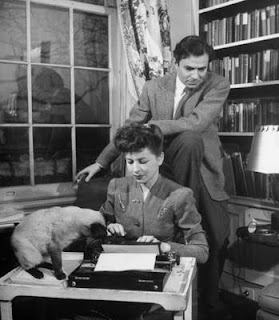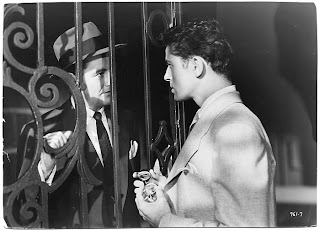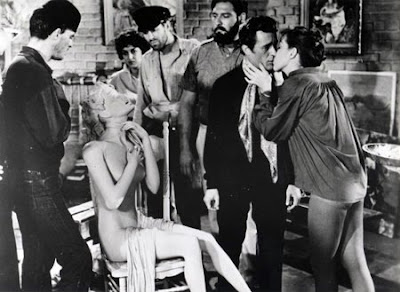Starring: Bonita Granville, Frankie Thomas, and John Litel
Director: William Clemens
Rating: Six of Ten Stars
When a wealthy old lady vanishes immediately after pledging to give a $250,000 gift to pay for a new pool for the all-girl school attended by teenager Nancy Drew (Granville), only Nancy believes that foul play may be involved. Roping neighbor and friend Ted Nickerson (Thomas) into helping her, she sets out to solve a mystery that ultimately brings her face-to-face with a band of dangerous crooks.

"Nancy Drew - Detective" is a fast-paced mystery/comedy that full of Girl Power 1930s style, with Nancy disregarding much of the rules of the chauvanistic society she lives in while running circles around adults, chasing down crooks in her sportscar and having adventures of the sorts that makes it easy to see why the "Nancy Drew" books became an immediate hit upon their debut in 1930. (While Nancy is smart and headstrong, she's also popular with her friends at school and she's always perfectly dressed.)
I haven't read any of the books myself, but someone who has told me that the Nancy Drew in print is far more composed and levelheaded than the one in the movie. I'll take her word for it,but the antics in this film reminded me of the juvenile detective fiction I read as a kid, specifically a series called "The Two Detectives". In those books, a pair of friends constantly got into the sort of scrapes that Nancy is in here, and they even relied on diguises and other bluffs like Nancy does. (Without ruining the film, I think I can reveal that Nancy and Ted infiltrate a private sanitarium, with Nancy in a black dress and veil and Ted disguised as a femal nurse. It gets really funny when he gets hit on by a lonely gangsters!)
Bonita Granville plays a cute and funny Nancy Drew, and she makes a great pair with Frankie Thomas, who plays Nancy's long-suffering pal Ted, who, it seems based on this film, is actually a cut above the usual sidekicks in film from this era. You can actually see why he and Nancy are friends... they are both very smart and they are both interested in seening the right thing done. (Although, Ted does seem to have a little more common sense than Nancy, even if goes out the window when she cooks up some crazy idea.) The rest of the cast is decent, but Granville and Thomas are the stars of the film in every sense.
For a fast-paced, lighthearted mystery film that you can sit down and enoy with the young girls in the house, I recommend checking out "Nancy Drew - Detective." Yes, it might be 70 years since the film was released, but the pacing, the jokes, and the overall story still entertains today. (If they're fans of the books, you can even talk to them about how long the character has been around, and perhaps even encourage them to write their own Nancy Drew stories, with their own take on the character. That's what the people who made the movie did, so why can't they?)




















.jpg)






.jpg)
